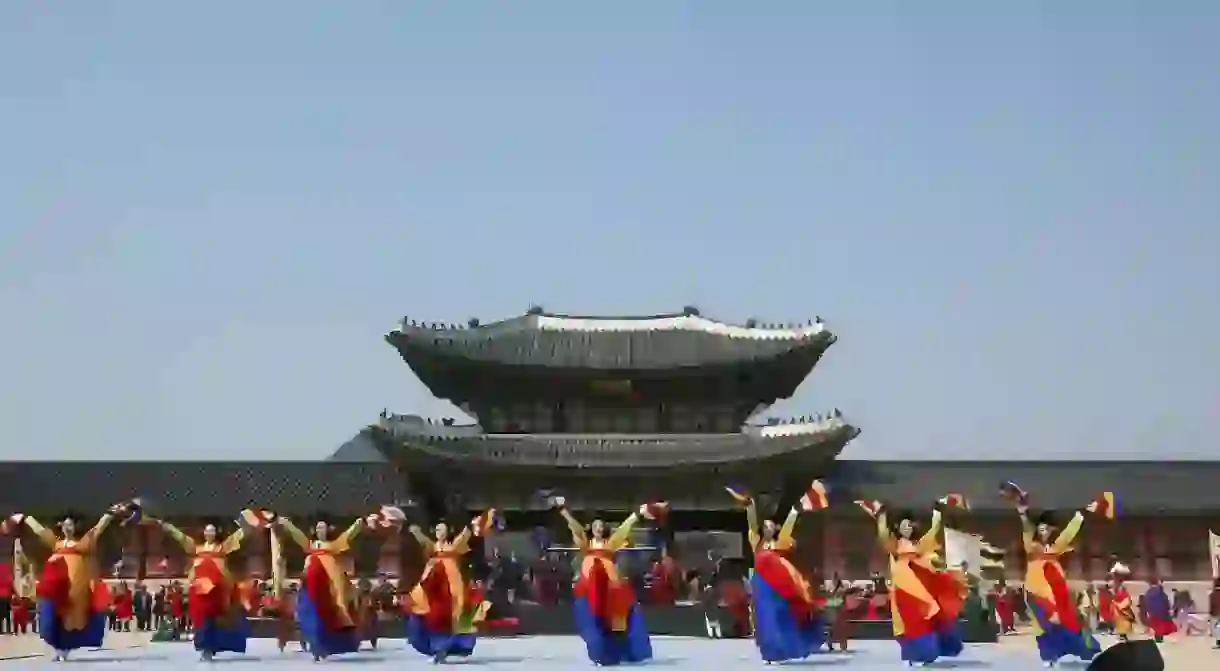10 Moments in History that Shaped Seoul

Known for its fascinating history, vibrant youth culture, and UNESCO World Heritage sites, Seoul has been a major political, financial, and cultural hub of South Korea since the 1300s. Through the years, it has seen a multitude of hardships and victories that have shaped it into the buzzing metropolis it is today. Here are a few of its most noteworthy moments.
October 1394
The Joseon Dynasty relocated Korea’s capital to Seoul. At that time, the city was known as Hanyang. Later the name changed to Hanseong, meaning “fortress city on the Han River.” Within a few years, the entire city would be surrounded by an enormous circular wall to provide its citizens protection from invasions, thieves, and wild animals, including tigers and bears.

September 1404
By this time, the construction of the Gyeongbokgung Palace was complete. The complex would remain the main royal palace of the Joseon Dynasty until 1910. It continues to be one of the grandest structures in the city, not to mention, one of the finest representations of traditional Korean architecture.
June 1904
Following the installation of street lights on Seoul’s Jongno 3-ga, and the commencement of telephone operations by the Hanseong Phone Exchange, public toilets were installed, making the city the first in East Asia to have electricity, streetcars, running water, and telephone systems all at the same time. American historian Angus Hamilton noted the city during his 1904 visit: “Seoul is within measurable distance of becoming the highest, most interesting and cleanest city in the East.”

August 1910
On August 22, the Japan–Korea Treaty of 1910 was signed. This officially started the period of Japanese rule in Korea. Subsequently, Seoul was made to be the headquarters for Japan’s governor-general. While under colonial rule (1910–1945), the city became known as “Keijo” in Japanese, or “Gyeongseong” in Korean.
1945
As World War II came to an end, the Korean capital became occupied by US troops, who were using the city as headquarters as they moved into positions south of the 38th parallel. On August 15, Korea was liberated from Japanese colonial rule, and the Korean peninsula divided in half, with the north under Soviet rule and the south under American occupation. The capital’s name changed to Seoul.
June 25, 1950
It was in 1950 when North Korean troops invaded South Korea, beginning the Korean War. Four days later, North Korea captured Seoul. The city would change hands between the United Nations and North Korea multiple times before March 14, 1951, when the UN would regain control of Seoul and hold it until the end of the war.

July 27, 1953
An armistice was signed at Panmunjom, issuing a cease-fire between military forces. It is estimated that at least 2.5 million persons lost their lives in the Korean War, making it one of the deadliest wars in modern history. Much of Seoul would remain in ruin while millions of its citizens would experience homelessness and poor living conditions until the city was reconstructed and industrialized in the 1960s and 1970s.
1988
Seoul hosted the 1988 Summer Olympic Games, which put the city back into the international spotlight. Around this time, national development plans were implemented to accommodate international businesses and budding high-tech industries, thus establishing Seoul as a cultural, political, economic, and transportation hub for northeastern Asia.

March 10, 2017
South Korea’s Constitutional Court upheld the impeachment of President Park Geun-hye, removing her from office over a scandal involving interventions to the presidency from her aide. Park’s impeachment was instigated by country-wide protests – many of which were held in Seoul’s Gwanghwamun Plaza – that saw millions of South Koreans demanding her removal from office. Park would be sentenced to a 30-year prison term for alleged bribery in 2018.

April 27, 2018
During a day-long summit in the truce village of Panmunjom, some 35 miles north of Seoul, South Korean President Moon Jae-in and North Korean leader Kim Jong Un pledged to formally end the Korean War, 65 years after hostilities ceased. Promises were made during the truce to end conflicts and improve the relationship between Korea’s two halves.













